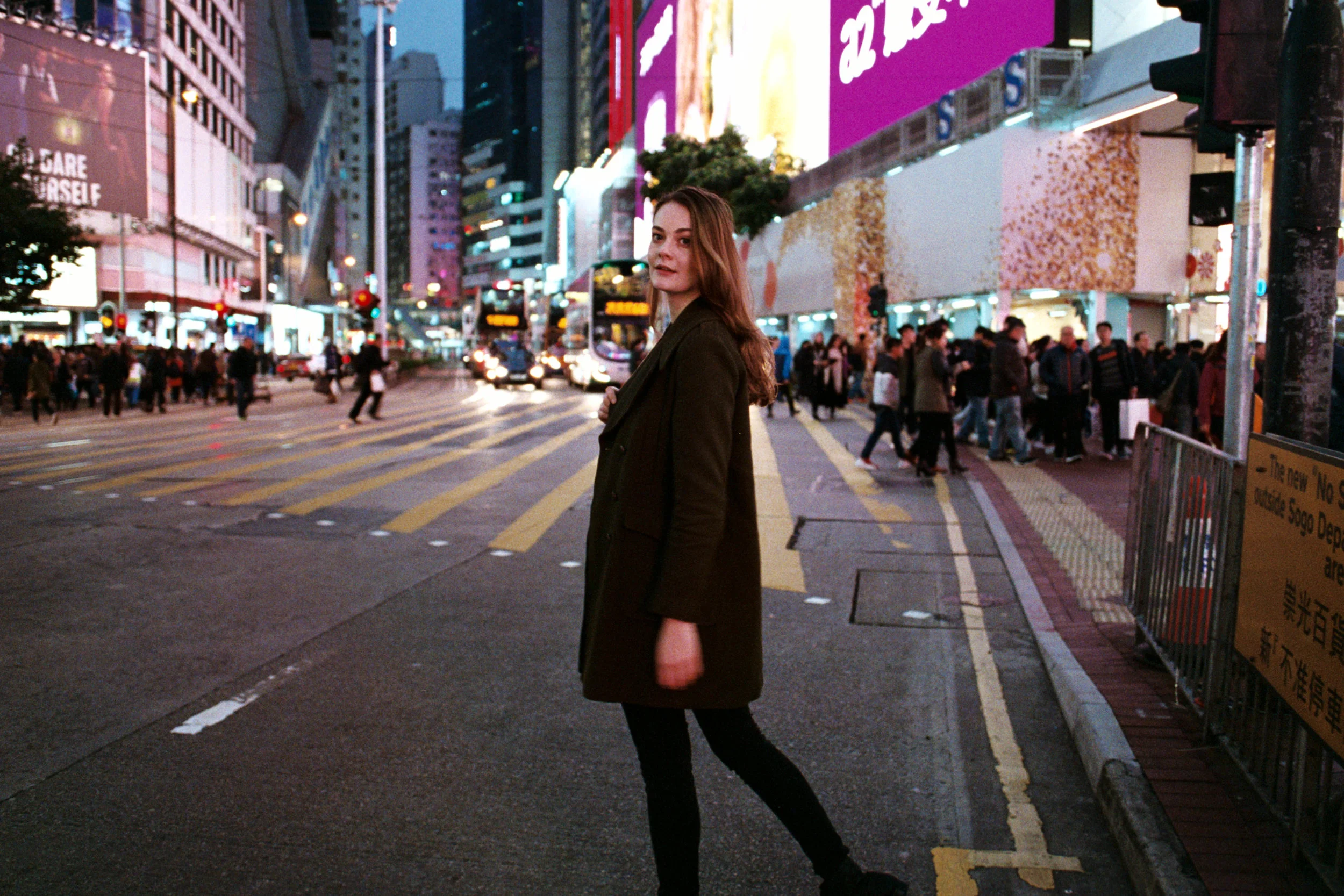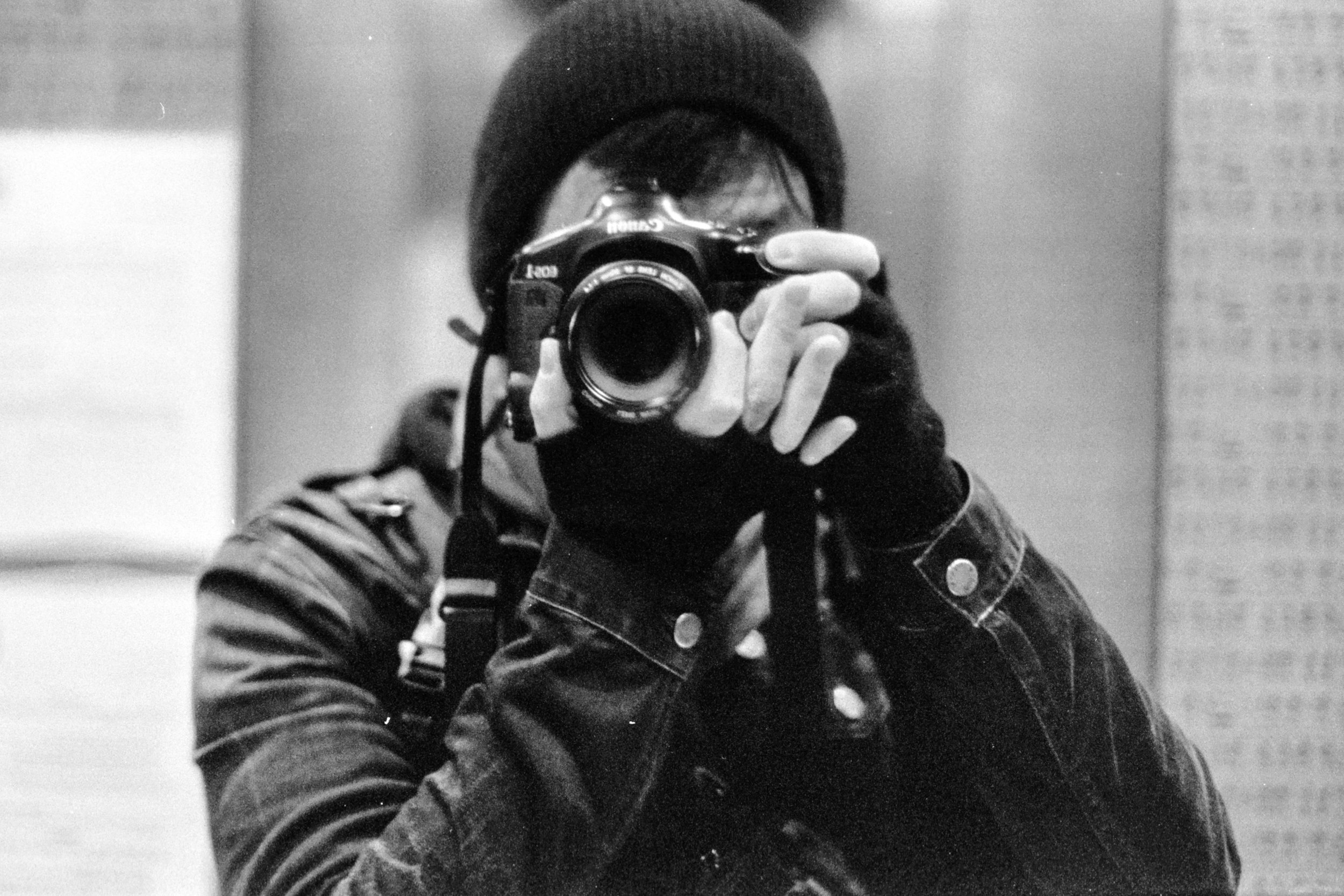Shooting Imperfection
There is a certain well known street photographer who published an article ( I guess a half year ago) praising the beauty of imperfect pictures. I wouldn't have known about it, if not for a Facebook recommendation. To be fair, I don't believe there is anything wrong to intentionally document imperfectly. But, I believe it may be overly optimistic to promote imperfection - or at the very least without some qualification of what imperfection involves.
To be fair, I can understand why some photographers embrace imperfection. The approach of documenting imperfectly can sometimes be a part of their creative process. But in the real world of regular folks, taking imperfect pictures may not be the most prudent advice... nor would it make sense. This is not to say that one cannot take imperfect pictures. But be forewarned that the results may be somewhat less than beautiful or visually appealing. It can be downright disappointing.
An imperfect picture looking bad? What are the odds?
What might not be immediately clear is just how difficult it is to take an imperfect picture. That may seem to fly in the face of logic, given the wide held belief that doing anything right is generally more difficult than doing anything wrong. So logically, taking perfect pictures should be more difficult than taking imperfect pictures, given the need to meet a level of standard.
Canon EOS 1v + Canon EF 28mm f/2.8 IS USM + Kodak Portra 160. Accidentally set at ISO 400 😖
Nikon F6 + Nikon AF-S 28mm f/1.4E + Kodak Portra 160. Accidentally set at ISO 400 😖
Canon EOS 1v + Canon EF 28mm f/2.8 IS USM + Kodak Portra 160. Accidentally set at ISO 400 😖
Canon EOS 1v + Canon EF 28mm f/2.8 IS USM + Kodak Portra 160. Accidentally set at ISO 400 😖
Nikon F6 + Nikon AF-S 28mm f/1.4E + Kodak Portra 160. Accidentally set at ISO 400 😖
Nikon F6 + Nikon AF-S 28mm f/1.4E + Kodak Portra 160. Accidentally set at ISO 400 😖
Admittedly, that is true. It takes no effort or talent to ruin a photo. I should know from experience, especially from all my many goof-ups. But what if you want to capture visually appealing imperfect pictures? Doing that isn't the same as taking your run-of-the-mill imperfect photos. That is to say the aforementioned photo you've ruined from poor composition or ineffective use of inaccurate focus, incorrect metering, or camera shake.
With an imperfect photo, you still want to take a good photograph. And to pull it off successfully, one must have a level of proficiency to take a perfect photograph, and then intentionally ruin it enough to make it better. It's not exactly as straightforward as it sounds, since there is no telling how the imperfection would be rendered. And because of that, ending up with a visually appealing imperfect image is anything but certain.
Given the uncertainty, does it really make good sense to ruin a photo opportunity, just for the off-chance a visually appealing imperfect image might be captured? And even if such an image were captured, would it really impact the documentation in a positive way? Moreover, would anyone notice it at all? Would anyone even care about it? But most importantly, would it be worth all the trouble?
Clearly, it would seem I'm not in favor of imperfect documentation.
Canon EOS 1v + Canon EF 28mm f/2.8 IS USM + Kodak Portra 400
Nikon F6 + Nikon AF-S 28mm f/1.4E + Kodak Portra 800
Canon EOS 1v + Canon EF 28mm f/2.8 IS USM + Kodak Portra 400
Canon EOS 1v + Canon EF 28mm f/2.8 IS USM + Kodak Portra 800
Canon EOS 1v + Canon EF 28mm f/2.8 IS USM + Kodak Portra 800
Nikon F6 + Nikon AF-S 28mm f/1.4E + Kodak Portra 800
It makes no sense to risk losing a perfect image capture, given there usually is no second chance for botched photo opportunities. So to be practical, doesn't it make more sense to play it safe and strive for perfection? In looking at the odds, I think it does. Therefore, any suggestion of going against normal photographic practice is just wishful thinking. Although, there is that one teeny-weeny-little wrinkle to playing it safe that has often troubled me. Perfection with all its certainty isn't necessarily better.
Come again?
Perfection in documentation is a result of technical accuracy. That is to say, photos composed correctly with tack focus, correct exposure, and no motion blur. To achieve this, the photographer is required to follow proper shooting fundamentals, which essentially is a set of rules. When rules are followed, variance in outcome (meaning mistakes in documentation) will be minimized. Consequently, this makes perfection somewhat predictable, in a cookie-cutter kind of way. So as you can imagine, a perfectly capture image can look rather ubiquitous.
What perfection lacks, in all its demonstration of technical accuracy is an impression of authenticity. Perfection often appears to idealize reality. It looks staged, which can make the documentation seem somewhat artificial. Admittedly, there is nothing wrong with predictability or staging or even cookie-cutter ubiquity. But playing it safe can make a perfect documentation become boring - especially if every image is optimized the same way for perfection. It makes a photographer look like a one trick pony.
Canon EOS 1v + Canon EF 28mm f/2.8 IS USM + Kodak Portra 800
Canon EOS 1v + Canon EF 28mm f/2.8 IS USM + Kodak Portra 800
Canon EOS 1v + Canon EF 28mm f/2.8 IS USM + Kodak Portra 800
Nikon F6 + Nikon AF-S 28mm f/1.4E + Kodak Portra 800
Nikon F6 + Nikon AF-S 28mm f/1.4E + Kodak Portra 800
Canon EOS 1v + Canon EF 28mm f/2.8 IS USM + Kodak Portra 800
While perfection can be limiting in scope with regards to documentation, imperfection can be more liberating. Imperfection, in a manner of speaking, is variance of technical accuracy in the documentation process. In allowing variance, photographers can relax their strict adherence to proper shooting fundamental, which will invariably lead to a more casual approach to documentation beyond the need for accuracy.
Approached in this way, the focus of imperfection is no longer the outcome, but rather the process of not seeking perfection. In doing so, the documentation process becomes less critical and more forgiving. As a result, there is much more spontaneity in what one would photograph and significantly less hesitation at the decisive moment, since the need for perfection is no longer as pressing. In other words, I don't need to confirm focus, exposure, and proper camera fundamentals before I take a photo.
Mind you, it still doesn't mean I want imperfection in the outcome of my image capture. Despite approaching the documentation process in this way, I'm still hoping that my hastened attempt in side stepping proper shooting fundamentals will not impact the accuracy of my documentation. I mean, I still want tack focus, correct exposure, and no motion blur. However, it is a tradeoff I'm willing to risk for the sake of capturing candid moments that cannot be staged. This is why I generally take an imperfect approach to documentation.
Canon EOS 1v + Canon EF 28mm f/2.8 IS USM + Kodak Portra 800
Nikon F6 + Nikon AF-S 28mm f/1.4E + Fujifilm Superia Venus 800
Nikon F6 + Nikon AF-S 28mm f/1.4E + Fujifilm Superia Venus 800
Nikon F6 + Nikon AF-S 28mm f/1.4E + Fujifilm Superia Venus 800
Nikon F6 + Nikon AF-S 28mm f/1.4E + Fujifilm Superia Venus 800
Nikon F6 + Nikon AF-S 28mm f/1.4E + Fujifilm Superia Venus 800
Unfortunately, mistakes will happen when the need to document accurately is no longer dutifully practiced with consistency. Sometimes the focus will be a little too off, with either foreground or background clutter comparatively more in focus. Sometimes, the exposure will be off by more than a couple of stops. And sometimes there will be unwanted motion blur.
It is in this situation that imperfection causes me the most grief - when a candid moment is "almost perfect". The question now is whether you are willing to accept your misstep or rather the consequence of taking a chance. Often times, when this happens to me, I try to be forgiving to myself in hindsight. I would tell myself I wouldn't have even captured that imperfect image, had I hesitated in documentation or not been spontaneous at the decisive moment. Besides, there is always the option of retouching, which wouldn't have even been available, had doubt prevented me from clicking the shutter.
Still, there is one more way of assessing imperfection in the resulting image, should you ever end up with an image just a touch too far from perfection or retouching. And I suspect that this is likely the explanation offered by those photographers who practice and advocate this approach to documentation. Simply, the conscious decision to reject accuracy in documentation is a personal choice. As such, shooting imperfectly must therefore be a demonstration of creative expression.
Canon EOS 1v + Canon EF 28mm f/2.8 IS USM + Fujifilm Superia Venus 800
Nikon F6 + Nikon AF-S 28mm f/1.4E + Fujifilm Superia Venus 800
Nikon F6 + Nikon AF-S 28mm f/1.4E + Fujifilm Superia Venus 800
Nikon F6 + Nikon AF-S 28mm f/1.4E + Fujifilm Superia Venus 800
Nikon F6 + Nikon AF-S 28mm f/1.4E + Fujifilm Superia Venus 800
Canon EOS 1v + Canon EF 28mm f/2.8 IS USM + Fujifilm Superia Venus 800
Anyway, you should give it a try, if you haven't already approached your photography in this way. Shooting imperfectly can be rather stimulating.
All images have been optimized tonally in Lightroom. Colors have not been altered, since film is perfect. All images have been cropped by the film scanner. All images shot on Portra 160 was shot at the wrong exposure, since I accidentally set the exposure mode to manual while thinking I was on aperture priority. Hence a couple of those images were pushed three stops.







